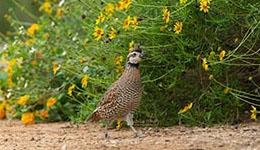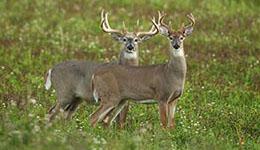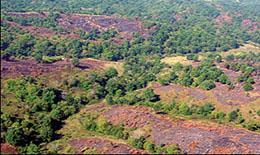Wildlife species require suitable habitats to help maintain or increase population numbers. The essential habitat components include food, cover, space and water.
Each species of wildlife has adapted to a certain set of habitat conditions to survive, using plant communities and vegetation ranging from annual forbs (broadleaf plants/weeds) and grasslands to woodlands and mature forests. You can manage plant succession — that is, the gradual change from one plant community to another — for the wildlife species or community in which you are interested with targeted management practices. These practices may include:
- Early-successional species:
- Cottontail rabbits
- Bobwhite quail
- Grassland birds
- Mixed-successional species:
- White-tailed deer
- Wild turkey
- Periodic disturbances that regularly interrupt the natural plant succession, which may be required if you are interested in managing for early- or mixed-successional species. Other species, such as squirrels and forest and woodland songbirds, require later stages of plant succession that include Missouri's forest and woodland habitats. A number of small mammals, reptiles and amphibians also thrive in these habitat types.
The disturbance’s timing is critical. Exactly when a disturbance occurs and the types of plant species present in the seed bed prompt different responses in the plant community. - The promotion of diverse vegetation. Establishing a diversity of vegetation that provides year-round nutrition and cover for wildlife is the key to providing wildlife habitat. Wildlife are adapted to specific plant communities that meet many of their habitat needs, particularly those with an abundance of native plants. Consequently, enhancing beneficial native vegetation is an essential part of any habitat plan. Native forbs and grasses can be established through disturbances created by disking, prescribed fire or thinning trees.
The U.S. Department of Agriculture Natural Resources Conservation Service, the Missouri Department of Conservation and MU Extension through the School of Natural Resources have cooperatively developed a series of habitat management fact sheets that describe specific practices that can improve habitat for wildlife on your property.
Related information

Read MU Extension bobwhite quail guides
Find resources for counting quail, ecology, quail-friendly plants and more.

Read MU Extension white-tailed deer guides
Find resources for nutritional requirements, antler development, potential pests to deer and more.

See habitat management fact sheets
Learn about development, succession, restoration and more for varied habitats.